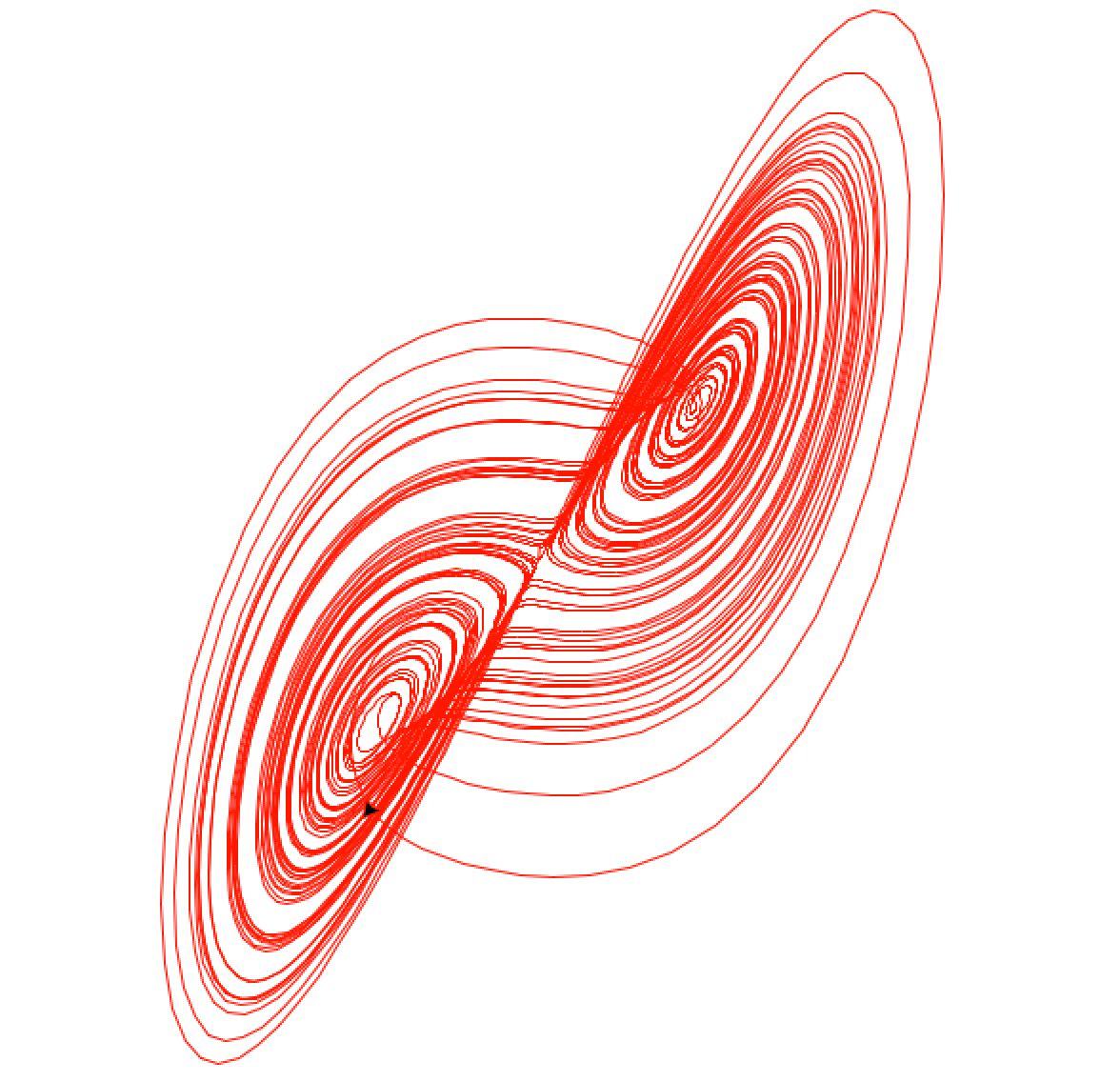Lorenz attractor using turtle
25 Jun 2014I recently discovered that a nice way to visualize the behavior of the Lorenz system is to use Python’s turtle module. In case you didn’t know, the Lorenz system is defined by the equations:
It’s interesting that such a simple system of differential equations can lead to such nontrivial results. Here’s what I came up with:
import turtle
from math import atan2
screen = turtle.Screen()
screen.title('Lorenz Attractor')
t = turtle.Turtle()
t.speed('fastest')
t.pensize(1)
t.pencolor('red')
t.radians()
t.pendown()
dt = 0.01
sigma = 10.0
beta = 2.667
rho = 28.0
x, y, z = 0.1, 1.0, 1.05
dx, dy, dz = 0.0, 0.0, 0.0
scale = 10
while True:
t.setpos(x*scale, y*scale)
t.setheading(atan2(dy, dx))
dx = (sigma*(y - x)) * dt
dy = (x*(rho - z) - y) * dt
dz = (x*y - beta*z) * dt
x += dx
y += dy
z += dzPretty self-explanatory I think, but its output is pretty cool:

Here is what gets produced after it runs for a while:
